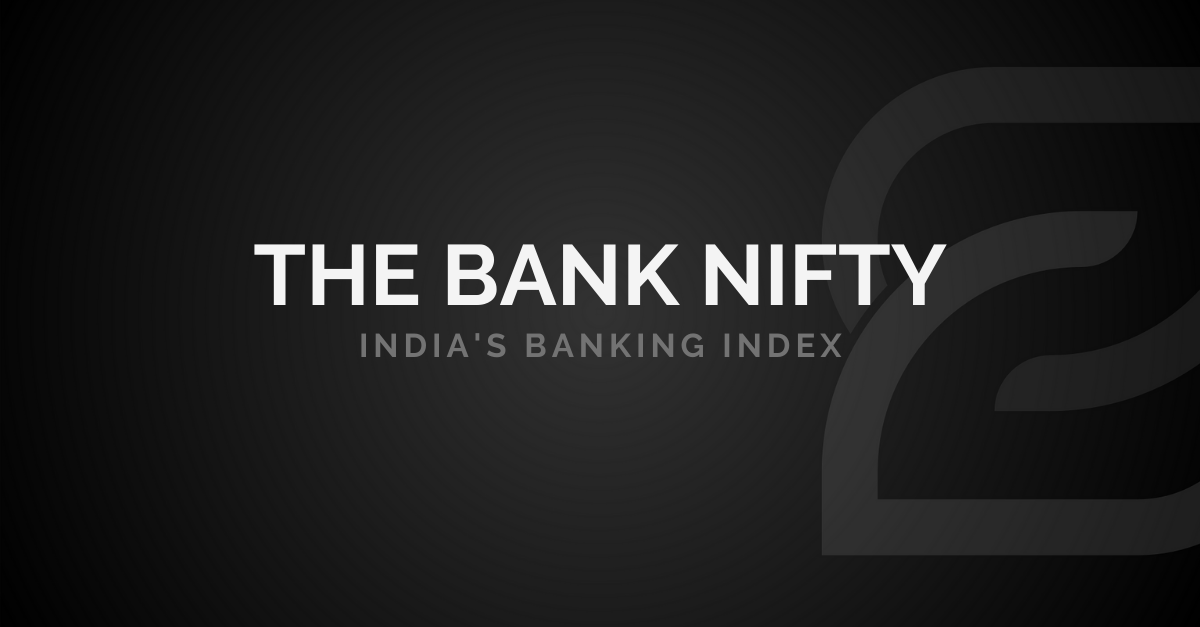Bank Nifty - India's Banking Index

If you're beginning to trade the Indian indices, you'll soon come across the Bank Nifty or BN for short (sometimes called Nifty Bank). This is probably the most actively traded (liquid) index after the Nifty. Given the size of the lots - 25, it makes it good for beginners who are just starting out to trade.
As a plus, they have weekly expiries, which is good for traders who want to make money from the premium/time decay. Many professional traders still trade this, and this adds to the liquidity.
So wouldn't it be interesting to see what sort of banks constitute the index? And what's the biggest component or weighed banks? Also, which banks are nationalized and which are public and private?
All this gives you some insight into how the BankNifty responds to the market environment. Coincidently, the BankNifty also constitutes a part of the Nifty, so there is some correlation. Typically, banking sector has been the lifeline of an economy - if the economy is doing well, the banks will flourish.
The BankNifty index consists of 12 banks:
Updated: 31 August 2020. Next update will be 31 December 2020.
The BankNifty is calculated based on the weightage of the Free Float (though that's not the only criteria). The free float is the market value of the total number of shares (excluding promoter holding, government and insiders) actively trading at exchange. Since this constantly changes, the index has to be regularly updated (so what you see above may change after this writing - I'll try to update whenever possible).
The first three or five banks that have the largest weightage should be something to watch. Any change in one of these, will affect the move, be it uptrend or downtrend in the Bank Nifty index. So for e.g. if you hear some news about HDFC Bank, ICICI Bank or Axis Bank - pay attention.
How do you buy / sell Bank Nifty Index?
There are a couple of ways, so here they are:
- Bank Nifty Futures - higher risk, higher return. A futures contract is a forward looking contract with fixed expiry date and contracts that expire can be rolled over to next contract.
- Bank Nifty Options - there are weekly & monthly expiring options. This is where I mostly trade, and quite certain where most option traders trade.
- Bank Nifty Exchange Traded Funds (ETF) - listed below are a few of the most liquid ones:
There are other ETFs, that are not so liquid as well, you can check them out here:

Now, each of these ETFs will have a tracking error, so please check them again before investing. They will also have an expense ratio, which typically could be in the range of 0.20%, definitely not like that of mutual funds with 1% - 2.5%.
Here are some interesting things to think about:
- The first three banks make up for just above 60% of the BankNifty total.
- The first five banks make up for just above 80% of the BankNifty total.
- A majority of the index is comprised of private sector banks. And State Bank of India (SBI) is only the 5th largest weighted component, yet it is the largest public sector bank in India. (This just goes to show where people have confidence).
- Banks which were earlier in private sector and then transferred to the public sector through nationalisation process are know as 'Nationalised Banks'. Under the process of nationalization, the private banks, as well as the state government-owned banks, convert to central government-owned banks.
- Punjab National Bank is part of the index, this is the same bank that lent to Nirav Modi - a bank which needs to be questioned as to its practices. It is the lowest weighted, so really doesn't have much influence.
- The Nifty 50 Index, also comprises of banking stocks, in fact about 25-30% of the Nifty 50 constitute banking stocks, with HDFC Bank being the most valuable.
- Generally, rule of thumb is that if HDFC Bank moves ₹ 10, the Bank Nifty will move 200 points.
Here's why you should pay attention to it. Because, the banks provide the life blood called cash & credit for an economy. If you're reading the latest developments, you'll be hearing about loan moratoriums.
Banks make money by lending money to people and businesses, if they don't get the principal or interest that is lent out, those loans become NPAs. Higher NPAs signify that there is a deeper problem in the economy, and that business may not be doing as well.
As you can see, the Bank Nifty has been more of an L-shaped recovery, if you can call it a recovery (I would prefer to call it a Swoosh recovery, similar to the Nike's logo swoosh):

So, with this I leave it to you to decide whether you want to invest or not. To find out what I'm doing, become a member of The Zencapita Notes.




Member discussion